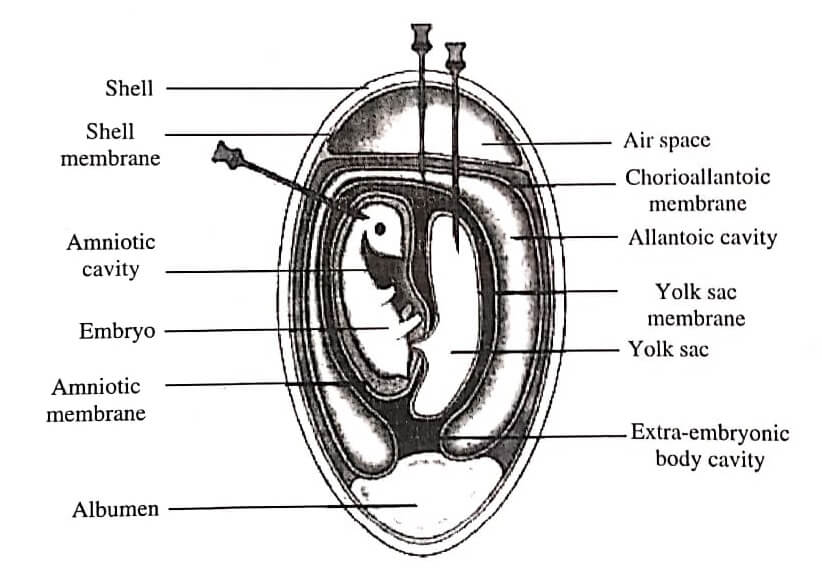Use of fertilised, embryonated chicken eggs is one of the cost-effective and convenient methods of cultivation for many animal viruses. A needle or syringe is put through a hole drilled in the shell to introduce the virus aseptically into the embryonated chicken eggs. The whole is sealed with paraffin and the eggs are incubated for 2−3 days at 36°C and viruses are allowed to multiply.

Any one of the given routes (figure) such as Chorioallantoic Membrane (CAM), allantoic cavity, amniotic sac, and yolk sac are used for inoculating the 7-12 days old embryonated hen’s eggs, followed by incubation for 2-9 days:
Chorioallantoic Membrane (CAM): It is inoculated for growing poxviruses as it produces visible lesions (pocks), each of which is derived from a single virion. By counting the number of pocks, the number of viruses present in the inoculum can be estimated. The morphological features of pocks produced by different viruses are different (figure).

Allantoic Cavity: It is inoculated for growing influenza virus for vaccine production. Yellow fever (17D strain) and rabies (flury strain) vaccines are some other examples of vaccines obtained from chick embryo. Since duck’s eggs are bigger, they provide a better yield of rabies virus and are used for preparing inactivated non-neural rabies vaccine.
Amniotic Sac: It is inoculated for isolation of influenza virus.
Yolk Sac Inoculation: It is inoculated for cultivation of some viruses and bacteria (chlamydia and rickettsiae).
| Read More Topics |
| Sterilisation of fermentation air |
| Evaluation of efficiency of sterilization methods |
| Quantitative measurement of bacterial growth |
| Isolation method for pure culture of bacteria |





